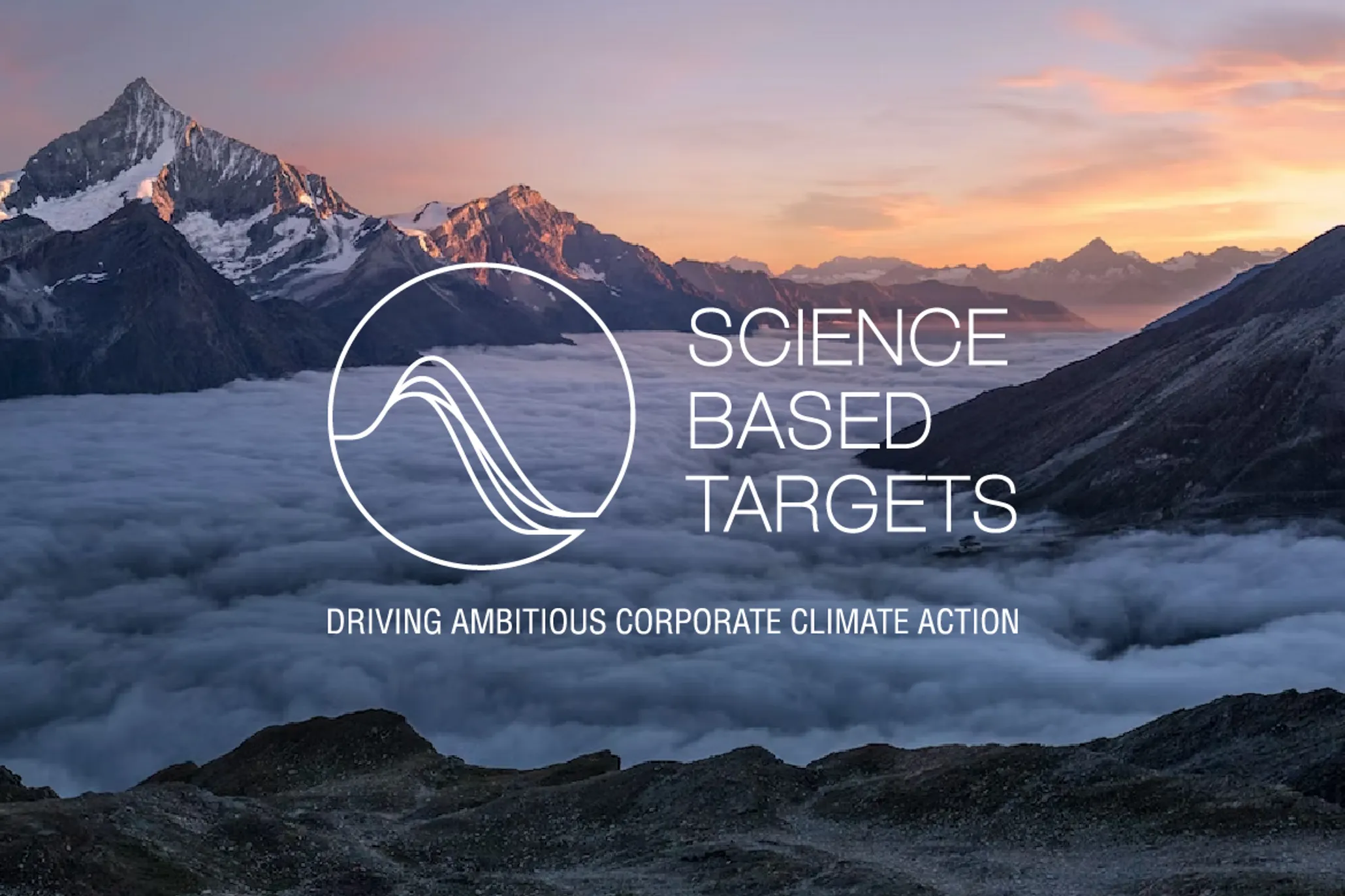Réponse Carbone 4 à la consultation publique du SBTi sur le Scope 3
Discussion questions
Le SBTi entreprend une révision majeure du Corporate Net-Zero Standard (CNZS), qui a été initialement publié en octobre 2021. Compte tenu de l'ampleur et de l'importance de la définition des objectifs du Scope 3 et de l'urgence croissante d'agir, le SBTi entreprend un processus de révision et de mise à jour du cadre de définition des objectifs du Scope 3 dans le but de s'assurer qu'il active efficacement la décarbonation de la chaîne de valeur tout en prenant en compte les obstacles auxquels les entreprises sont confrontées.
Ci dessous, la réponse de Carbone 4 à cette consultation publique.
---
Section 1: A more comprehensive set of tools
1. The paper introduces the concept of "alignment targets" that assess the alignment of a company's upstream and downstream activities with global climate goals. Which approach to introducing alignment targets do you think would be most effective?
Both alignment and emission reduction targets are required for near and long-term targets
2. Please explain your answer to question 1 above
We welcome the proposal to integrate the concept of "alignment targets" into the heart of the SBTi Net Zero Standard. We believe that it is appropriate to retain both carbon footprint targets and alignment targets in the SBTi standard. Indeed, instead of the carbon footprint metric alone, outcome based targets or alignment targets provide a clearer picture of a company's relevance in a low-carbon world or a world in transition. However, the carbon footprint remains essential and must be kept under control. We therefore believe that it is appropriate to deal with both types of information together. Both objectives should be mandatory, even for near-term targets.
One way of linking the two could be to make the carbon footprint reduction constraints conditional on the company's current alignment (e.g. a bicycle manufacturer, an activity that can be considered as aligned with a low-carbon scenario, could make less restrictive commitments than a producer of electricity from fossil sources).
In addition, we strongly recommend that these "outcome based targets" be differentiated by sector and by geography, and always be calculated by companies on the basis of physical flows (for example, the outcome proposed by SBTi concerning "Zero or low-carbon transportation activity share" should be calculated on the basis of tonnes.km per mode of transport, and not on the basis of monetary flows).
Several outcome-based targets are sometimes necessary to act simultaneously on substitution, efficiency and sufficiency. We invite SBTi to integrate all the levers of action, in particular via these 3 concepts in the definition of outcome-based targets. For example: committing to increasing the proportion of low-carbon electricity (to act on the substitution lever), and at the same time reducing electricity consumption (to act on the sufficiency or energy efficiency levers).
Lastly, outcome-based targets must be able to incorporate both the challenges of improving business without structural change, and the more far-reaching redefinitions of business models (e.g. business models based on the sale of short-life products, leading to over-consumption of materials). However, we understand the political and economic risk this request could entail: leading companies to reveal certain key elements of their "strategic plan".
3. At what level of granularity should the SBTi assess the alignment of value chain activities with global climate goals:
Both at the overarching revenue and procurement-level (Option 1) with sub-targets at the activity level (Option 2)
4. Which of the following options for assessing alignment do you think is most effective if a company identifies a value chain activity in a high-climate-impact sector (e.g. steel production) in its direct business relationships (e.g. tier one supplier)?
At both the entity level and emissions source level
5. Which of the following options for assessing alignment do you think is most effective if a company identifies a value chain activity in a high-climate-impact sector (e.g. steel production) beyond its direct business relationships (e.g. beyond tier one supplier)?
At both the entity level and emissions source level
6. Please indicate (with links) any tools or resources that may be useful for establishing alignment at the activity level that SBTi should investigate. For example, commodity certificates, climate taxonomies, etc.
We welcome the idea of investigating resources and tools that conceptualise the notion of alignment with a low-carbon trajectory. In our view, relevant resources include:
- To identify 'green' products or products aligned with the transition to a low-carbon society (or as part of 'downstream emission metrics'):
- Carbone 4's Compatibility Score with the Paris Agreements (SCAP), which measures the relevance of a product or service in relation to a given scenario (here applied to a low-carbon world that has transitioned along a 1.5° decarbonisation trajectory or WB2DS).
- European Union Taxonomy for Sustainable Activities: helps companies understand how environmentally friendly their activities are; World Bank summary of existing taxonomies.
- For the definition of transition scenarios:
- IF Initiative, by Carbone 4: the initiative develops tools and methods for imagining and building futures that are compatible with planetary limits.
- The role of businesses in helping to achieve global carbon neutrality:
- Carbone 4's Net Zero Initiative.
- For tried and tested decarbonisation strategy guidelines:
- To link CO2 emissions to the business:
- the CSRD's requirement for a description of the business model and value chain helps to identify easily implementable reduction actions and to see whether they modify the business model.
Section 2: A more nuanced approach to target-setting boundaries
Please refer to Table 3 on p. 46 and onwards of "Operationalizing the proposals" when answering the question and Key Challenge 3 within Annex I, which describes the limitations of the current approach to target boundaries.
7. Should the SBTi continue requiring companies to set scope 3 targets only if their scope 3 emissions constitute 40% or more of total scope 1, 2 and 3 emissions?
Yes
8. At what level of granularity should the SBTi require companies to breakdown their scope 3 emissions in order to enable effective identification of relevant emissions sources for target setting?
Note: here we use the term "category" to refer to scope 3 categories as defined in the GHGP Scope 3 Standard
Where categories are identified as high magnitude (i.e. constitute a large volume of emissions), for example the top 2 or 3 categories, break these down at the specific activity, commodity, product or service level using a predefined significance threshold.
9. Please explain your answer to question 8 above
We think that option two is relevant, and more specifically, it could be thought of in the following way:
- For the most important GHG categories, an additional level of granularity should be expected, and the category could be broken down into sub-items:
- calculated on the basis of physical flow data for the most significant, making it possible to define "outcome based targets".
- defined on the basis of categories of end use. Calculating emissions at the usage level makes it possible to consider, when setting targets and implementing the roadmap, other less carbon-intensive ways of carrying out the same use (for example: purchasing could be categorised into sub-uses: materials to manufacture the company's core product, packaging materials, materials to manufacture other products, materials to manufacture a particular part of a final product, etc.). Furthermore, in order to be able to set effective targets and aim to reduce emissions, the categories must group together physically homogeneous processes.
- For the other GHG categories, a less granular approach could be envisaged. While an approach based on physical metrics is necessary in order to commit to the most significant items/sub-items in the carbon footprint, an approach based on monetary metrics can be envisaged for the least significant items/sub-items, in order to simplify the process. For example, if purchasing represents a significant item in the carbon footprint, then it should be calculated on the basis of physical data and end-use categories. However, a monetary approach could be considered for business travel if it is not significant.
10. Which approach to determining the target boundary for near-term targets do you agree with most?
Note: Climate-relevant emissions sources refer here to activities prioritized based on emissions magnitude, high-climate impact sectors and risk of emissions lock-in.
Align near-term boundary with net-zero target boundary requirements (90%), supplemented by climate-relevant emissions sources if necessary.
11. Please explain your answer to question 10 above
We believe that taking into account the broadest possible scope of emissions is beneficial for both near-term and long-term targets. The most important thing is that the scope enables the company to implement the key actions it can to reduce the significant sources of emissions in its carbon footprint. By choosing a minimal scope that is too narrow, there is a risk of overlooking a significant source of emission and therefore missing a major potential for reducing emissions. Nevertheless, we understand the difficulty for some companies of committing to a perimeter of 90% of emissions from their first submission of objectives. It therefore seems relevant to us to ask companies to commit to results-oriented targets (whether they relate to emissions or outcomes) for 67% of their scope, and to commit to less stringent objectives, such as means-based targets, for the remaining 23%. A perimeter that evolves over the years could also be envisaged: after 2 years at 67%, or during the compulsory update of targets after 5 years, it might be necessary to extend the perimeter to 90% (based on the idea that the learning process will have allowed the company to better identify the reduction levers for the remaining 23%).
12. Can you provide any proposals for how the SBTi might integrate influence into the framework, other than those presented within the paper?
Our experience shows that the notion of influence (understood as the ability of companies to affect the emissions of certain categories) is, in fact, highly subjective and plural, even within the internal organisation of a company. It therefore appears to be a slippery concept for a standard definition of objectives based on science.
Secondly, the notion of influence must not diminish awareness of the company's vulnerability to emissions, even if they are extremely indirect. Excluding certain areas because of a lack of influence is tantamount to refusing to deal with a transition risk.
Conceptually, influence is linked to responsibility, and dependence to risk; these are two ‘orthogonal’ dimensions that we think should be emphasised.
Furthermore, we believe that this notion is better defined at the level of a reduction action rather than an emissions item. We can suggest different types of action that companies can take to reduce their emissions, depending on the degree of influence:
- Autonomous actions: actions that the company can decide to take directly on different scopes (Scope 1&2 or 3) and that require to spend money, on a Capex or Opex basis. These are actions that can easily be objectified by outcome-based targets. Direct incremental reduction actions (changing the way things are done without changing the activity as perceived by stakeholders).
- Prescriptive actions: actions that call into question the way in which activities are carried out, in particular by rethinking purchases and/or offers of goods or services. These actions require working with or influencing stakeholders. In this way, the company can change the requirements it places on its suppliers, or redesign the services it offers its customers, in order to take action on emissions that may be even further down/up the value chain of its products or services (e.g. end-of-life of products or services, extraction of raw materials). Follow-up indicators and metrics can also be objectively measured using outcome-based metrics. Incremental or disruptive reduction actions (disruptive actions correspond to structural changes in the company's business model or changes in its purchasing or product/service portfolio).
- Indirect actions: in addition to the effective reduction actions mentioned in the two points above, the company can also implement more symbolic actions or actions with indirect effects, which can address more distant links in its value chain, and also make it possible to establish a long-term culture of reducing environmental impacts at all levels of the company. We distinguish between
- understanding initiatives (training, awareness-raising, more in-depth training for people involved throughout the value chain: company employees, suppliers, customers, as well as improving understanding of the company's carbon and environmental impacts),
- and actions to engage external stakeholders (advocacy, signing of charters, sponsorship, partnerships).
These actions help to prepare the ground for concrete changes within the company, particularly the most structural changes. Although sometimes neglected, they are often necessary for Climate action. However, it is difficult to assess the results of these actions. We therefore recommend means-based objectives for these indirect actions.
We also recommend that the notion of influence not be taken into account when defining the global scope of a company's commitment. However, it is useful for defining the type of objectives according to each lever of action, particularly by introducing means objectives for indirect actions of influence.
Section 3: Environmental Attribute Certificates
Please refer to the section "Exploring the role of environmental attribute certificates in addressing value chain emissions" and "Annex V: Overview of Environmental Attribute Certificates and Chain of Custody Models" when answering these questions.
13.a. In the context of Scenario 1: Use of commodity certificates from value chain activities, what additional considerations should the SBTi take into account when further examining this scenario?
Environmental Attribute Certificates (EACs) can offer a degree of flexibility in the traceability chain, but should not serve as an excuse or refuge for inaction on the part of certain economic players. EACs should not replace physical action to decarbonise the value chain.
Our recommendations below aim to ensure a minimum of physical consistency in the use of EACs for carbon accounting under the Net Zero Standard (NZS):
- Spatial coherence:
- EACs must be purchased/used within a geographical perimeter limited to that in which the good or service that gave rise to the issue of the certificate circulates. For example, EACs issued for the production of low-carbon steel can be marketed on a global scale, because the steel physically circulates on a global scale. On the other hand, EACs linked to biomethane produced from household waste must be marketed regionally/locally, because the biomethane in question will be used close to where it is produced.
- Time consistency:
- The useful life of the EACs, i.e. the period over which they can be used, must correspond to the average duration in the exchange network of the associated commodity. E.g.: EACs linked to the production of renewable electricity must be used in association with actual electricity consumption taking place no more than 1 hour after production, whereas EACs linked to the production of low-carbon steel may be used in association with a purchase taking place several months after production.
- EACs must be used during the same reporting period as its purchase (and the purchase of the associated commodity).
- Consistency with the activity:
- EACs must not be marketed separately from the commodity. E.g.: A player cannot buy conventional carbon steel from one supplier and low-carbon steel EACs from another supplier to claim low-carbon steel consumption in its business.
- EACs must not be associated with an activity for which the commodity in question is not suitable. E.g.: EACs linked to recycled materials must not be used in a sector for which only virgin materials meet the technical specifications.
- The quantity of EACS that can be sold to a given customer must be limited by the customer's annual consumption of the associated commodity. Over-reduction must not be permitted.
If all these conditions are correctly met, Environmental Attribute Certificates (EACs) can be integrated into the accounting of scopes 1, 2 or 3. Company reporting would then more accurately represent the physical reality of exchanges by incorporating rigorous methods and safeguards.
13.b. In the context of Scenario 2: Use of commodity certificates from sources with lower or no value chain traceability, what additional considerations should the SBTi take into account when further examining this scenario?
EACs can offer flexibility in the traceability of reductions within a given value chain, but must not allow reductions to be transferred between different value chains. The accounting of these reductions in the carbon footprint of organisations must verify a minimum physical consistency and represent a possible and credible physical reality of the activity in question.
For example, a player that buys steel from a supplier that offers low-carbon steel could use the EACs issued by the supplier to claim that it is buying low-carbon steel, even if in reality the steel delivered to it is not low-carbon. The condition for this use is that these EACs are correctly canceled by the buyer so that they are not counted twice, either by the customer to whom the low carbon steel was delivered, or to reduce the supplier's average emissions factor. On the other hand, a player cannot buy steel from a supplier who only offers carbon steel and buy EACs from another supplier, with whom he has no physical flow exchanges, to claim to be consuming low-carbon steel.
For example, EACs that do not allow a minimum level of traceability of physical flows cannot be used to reduce the carbon footprint.
Finally, certain criteria aimed at guaranteeing physical consistency can be temporarily made more flexible, until the market creates the necessary conditions for ideal traceability. For example, a discount coefficient can be defined to minimise the emissions reduction in the carbon footprint. This flexibility in the criteria must be temporary and must not allow reductions the same level as the more rigorous criteria, in order to encourage the stakeholders to develop traceability chains towards more robust models.
For example, the use of renewable energy certificates should ideally verify temporal consistency between production and consumption on an hourly basis. As the current market does not allow such temporal consistency to be easily ensured, consistency on a daily and/or monthly basis could be temporarily accepted. However, the use of certificates linked to daily or monthly consistency should not make it possible to completely cancel out a company's scope 2, in contrast to the case where hourly consistency is verified.
13.c. In the context of Scenario 3: Use of carbon credits from mitigation activities within the value chain to substantiate value chain emission reduction claims, what additional considerations should the SBTi take into account when further examining this scenario?
Carbon credits should not be counted towards GHG reduction targets as a substitute for actions taken by companies to reduce emissions, in a compensation logic.
This use of carbon credits tends to hide the company's dependence on carbon emissions and to slow down (or even prevent) the implementation of reduction actions, as the company sees its scope 3 reduced virtually. This virtual reduction in scope 3 makes no physical sense, given that no reduction in emissions in the value chain has been proven, and distorts the logic of the carbon footprint, which is supposed to represent an organization's dependence on GHG emissions.
Carbon credits should only be used as part of a climate strategy to contribute to the development of carbon sinks in order to neutralize residual emissions and/or to contribute to collective carbon neutrality by mitigating emissions outside the value chain (BVCM).
If the carbon credits are generated within the company's value chain, the company will benefit from a reduction in its emissions through the reduction in its supplier's average emissions factor. Carbon credits cannot be used by the company to claim an even greater reduction in emissions, which makes no physical sense.
13.d. In the context of Scenario 4: Use of carbon credits to support neutralization of residual emissions, what additional considerations should the SBTi take into account when further examining this scenario?
A relevant use of carbon sequestration credits is to finance the development of carbon sinks in order to contribute at the right level to achieving global carbon neutrality. To do this, the right level of contribution to the development of carbon sinks must be clearly defined for each player.
Residual emissions are defined as those that remain unabated after the implementation of all possible and necessary reduction actions to align with a 1.5°C trajectory. SBTi currently defines residual emissions as 10% of 2020 emissions for all types of organisation. However, the capacity to reduce and the role in limiting global warming to 1.5°C can vary significantly from one sector to another. Asking for a 90% reduction in emissions is therefore too ambitious for some players and not ambitious enough for others. The percentage of residual emissions should ideally be established at the level of each player, who should justify how they define their residual emissions, or at least at the level of different economic sectors (or even regions).
In addition, for players with significant carbon sequestration potential within their value chain, such as those in the land sector, carbon credits should not replace actions to develop carbon sinks in their value chain. For this type of player, it is necessary to define an additional target, specific to sequestration in their value chain. In this case, sequestration carbon credits could be used to fill the gap between the sequestration potential in the value chain and the level of residual emissions in 2050.
13.e. In the context of Scenario 5: Use of carbon credits to support beyond value chain mitigation, what additional considerations should the SBTi take into account when further examining this scenario?
Carbon reduction and avoidance credits should only be used to contribute to collective carbon neutrality by contributing to the mitigation of emissions outside the value chain (BVCM). They can then be integrated into the Net Zero Standard, but must be accounted for separately from the carbon footprint, for example with the avoided emissions indicator.
Main recommendations:
- BVCM should include both quantifiable and non-quantifiable mitigation measures, and this should be emphasized in the definition of the concept.
- The claiming of BVCMs by different players should be possible in the case of "contribution" claims as opposed to "compensation" claims.
- Monitoring and control of actual emissions reductions must be one of the key criteria of the CVBM.
- The difference between the three types of projects (beyond value chain reduction/avoidance; beyond value chain removal; inside value chain removal) must be specified and Net Zero claims must be separated and clarified in SBTi documentation. Only the last two (beyond and inside value chain removal) can be considered for Net Zero claims.
- We recommend the use of the "money for ton" approach to define the fair contribution of the BVCM, as it probably has the best feasibility/impact ratio of all the methods.
Finally, we would like to emphasise that BVCM is completely separate from unabated emissions and that it is necessary to work on both aspects. The compensation paradigm should be abandoned.
Section 4: Risks and Mitigation Approaches
Please refer to Annex VI: Potential Risks and Mitigation Approaches when answering these questions.
14. What other potential risks do you see in addition to those described in Annex VI? How could these be mitigated?
We have identified the following other potential risks:
- While the concept of "outcome based metrics" is interesting, it must make it possible to integrate structural changes for the company and not just marginal changes to the business. Indeed, for some business sectors, the very purpose of the company needs to be challenged. We could then talk about "alignment metrics". In this respect, we welcome the proposals to integrate complementary tools such as taxonomies.
- Furthermore, the concept of outcome-based metrics and the proposal to integrate complementary tools such as taxonomies, imply that SBTi is moving away from its desire for scientific neutrality to become prescriptive, which could give rise to major political risks and we fear that these could delay the process of updating and publishing methodologies.
- Finally, if the main metric is no longer the carbon footprint, but rather outcome-based metrics, how would this relate to the uses of carbon credits mentioned in section 3?
15. Please provide any other comments or suggestions on the proposed approach and preliminary options to improve the value chain framework that you haven't mentioned so far. Please be as specific as possible, e.g. stating the sector or geography you are referring to and any sources, references or definitions used.
Our comment relates to the long-term objective of achieving a 90% reduction in emissions by 2040 or 2050 for all companies, regardless of their sector or geographical area, and the nature of the products or activities that form the core of their business model.
We understand the importance of controlling and reducing the carbon footprint as part of a contribution to achieving global carbon neutrality. However, we doubt the relevance of basing a company's strategy for contributing to neutrality on a universal objective, identical for all companies, of reducing emissions over the long term, for three main reasons.
Firstly, this objective remains blind to the purpose of the product sold by the company, and more specifically its alignment with the transition of society according to a 1.5° decarbonisation trajectory, as well as to the geographical and sectoral contexts to which companies belong. Indeed, the objectives of a company manufacturing bicycles or other low-carbon means of transport cannot be built solely on the carbon footprint and its 90% reduction, which would not reflect the virtuous modal shift induced by low-carbon transport, and therefore its contribution to global carbon neutrality. Similarly, an OECD company operates in a different economic context to a company in a developing country, and the single value of reducing the carbon footprint by 90% does not reflect these different challenges.
Secondly, our experience has shown that setting long-term emission reduction targets alone is often not enough to trigger action in companies whose governance is more rooted in a short-term system. Indeed, today's managers are generally not committed to the long term.
Finally, the sole objective of reducing the carbon footprint over the long term is often reduced to an annual variation target, encouraging companies to optimise their footprint and implement incremental actions, rather than structural changes or a rethink of their business model. This leaves no room for reflection on the nature of products and activities, and their alignment with a society in low-carbon transition, which is crucial if the latter is to happen.
To summarise our position, we believe that many of the proposals contained in the Scope 3 Discussion Paper are interesting in terms of overcoming the limitations of the current Net Zero Standard's universal emissions reduction target. In particular, we welcome the idea of making "outcome based targets" more operational and believe that it is important to specify them more precisely to ensure their relevance. In addition, we suggest incorporating means-based targets, in particular to implement influencing actions (indirect actions, as defined in Question 12) whose results are difficult to quantify but whose implementation is necessary.
Here is a summary of the ideas put forward by Carbone 4:
- Taking the current version of the Net Zero Standard as a starting point, we feel that the single emissions reduction target for all companies needs to be overhauled: SBTi could rather ask companies to set reduction targets that would be more specific to the context of the company, and broken down by sector and geographical area. The geographical distribution of global science-based targets could be based on the commitments made by nations to reduce their emissions during the Conferences of the Parties (Nationally Determined Targets). The work of Carbone 4's IF Initiative could also be used in this context.
- SBTi's NZS could also ask companies to commit to result-oriented objectives targeting other indicators than carbon footprint, including:
- Result-oriented objectives on the product offering, so as to promote products and services that are virtuous and aligned with the low-carbon transition:
- Ask companies to commit to reaching a target (threshold to be defined), within their portfolio, of products and services relevant in a low carbon world, within a given timeframe (to be defined). SBTi could initially ask companies to adopt a definition of these virtuous products, and to communicate transparently on this methodology. In a second phase, SBTi could sort through the companies' taxonomies and draw on proven methodologies on the subject to construct its own definition of virtuous products. The methodologies that provide inspiration are: studies that measure the relevance of a product or service in relation to a given scenario (such as Carbon 4's Paris Agreement Accounting Score), or taxonomies (including the European Taxonomy). We have listed these different sources for possible study in the Scope 3 response form, in question 6.
- Result-oriented objectives on the product offering, so as to promote products and services that are virtuous and aligned with the low-carbon transition:
- Finally, SBTi's NZS could, for example, ask companies to commit to means-based targets, including:
- The definition of a strategy based on the sectoral variation of a global neutrality scenario, which will have to be explained by the committed companies. These scenarios would explain, in particular in qualitative terms, the roles that companies could play in society in transition. They could be derived from the work of scenario providers (e.g. Carbone 4's IF Initiative), with the need to be aligned with the transition to a low-carbon society. They should emphasise the notion of "sufficiency" as one of the main levers for decarbonisation (along the lines of what is encouraged/recommended by the IPCC), and, finally, could contain a range of strategic guidelines depending on the sector (along the lines of the Land Transport Guidance, which includes the requirement to cease production of new internal combustion vehicles by 2035 - 2040). In addition to the choice of scenario, the company should explain how it will contribute to this scenario. A commitment from management to permanently align the company's strategy with the reference scenario could also be required, for example by means of a letter of commitment (similar to the ACT Step by Step method developed by Ademe, CDP and the World Benchmarking Alliance, which begins with the commitment and training of the company's Executive Committee).
- The establishment of a low-carbon strategy that is compliant with proven benchmarks on the subject (e.g. the Net Zero Initiative developed by Carbone 4), in the same way that the carbon footprint must be established in compliance with a standard (the GHG Protocol)
- The attainment of additional compensation for executives and managers is partly contingent on aligning emissions with the established trajectory, which is measured annually, such as through the evolution of outcome-based metrics
- Like the CSRD and the requirements of its transition plan, the publication and explanation of the company's plan(s) (CAPEX, OPEX) to align its economic activities with its chosen decarbonisation trajectory.
- The definition of human resources (posts, training, prerogatives, personal objectives, etc.) as well as organisational resources (studies, projects, governance) aimed at implementing all types of action levers. The requirements of the CSRD may be considered for this point, and in particular those contained in the section of the ESRS 2 "Minimum publication requirement - MDR-P policies - Policies adopted to manage significant sustainability issues".
Contactez-nous
Pour toute question sur Carbone 4, ou pour une demande concernant un accompagnement particulier, contactez-nous.








